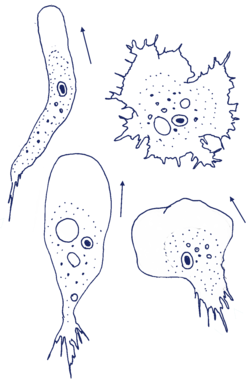| Leptomyxida | |
|---|---|
 | |
| Rhizamoeba saxonica | |
| Scientific classification | |
| Domain: | Eukaryota |
| Phylum: | Amoebozoa |
| Class: | Tubulinea |
| Order: | Leptomyxida Pussard & Pons, 1976 |
| Families | |
Leptomyxida is an order of Amoebozoa. [1] [2]
It includes species such as Flabellula citata , Paraflabellula hoguae , Paraflabellula reniformis , Rhizamoeba saxonica and Leptomyxa reticulata .